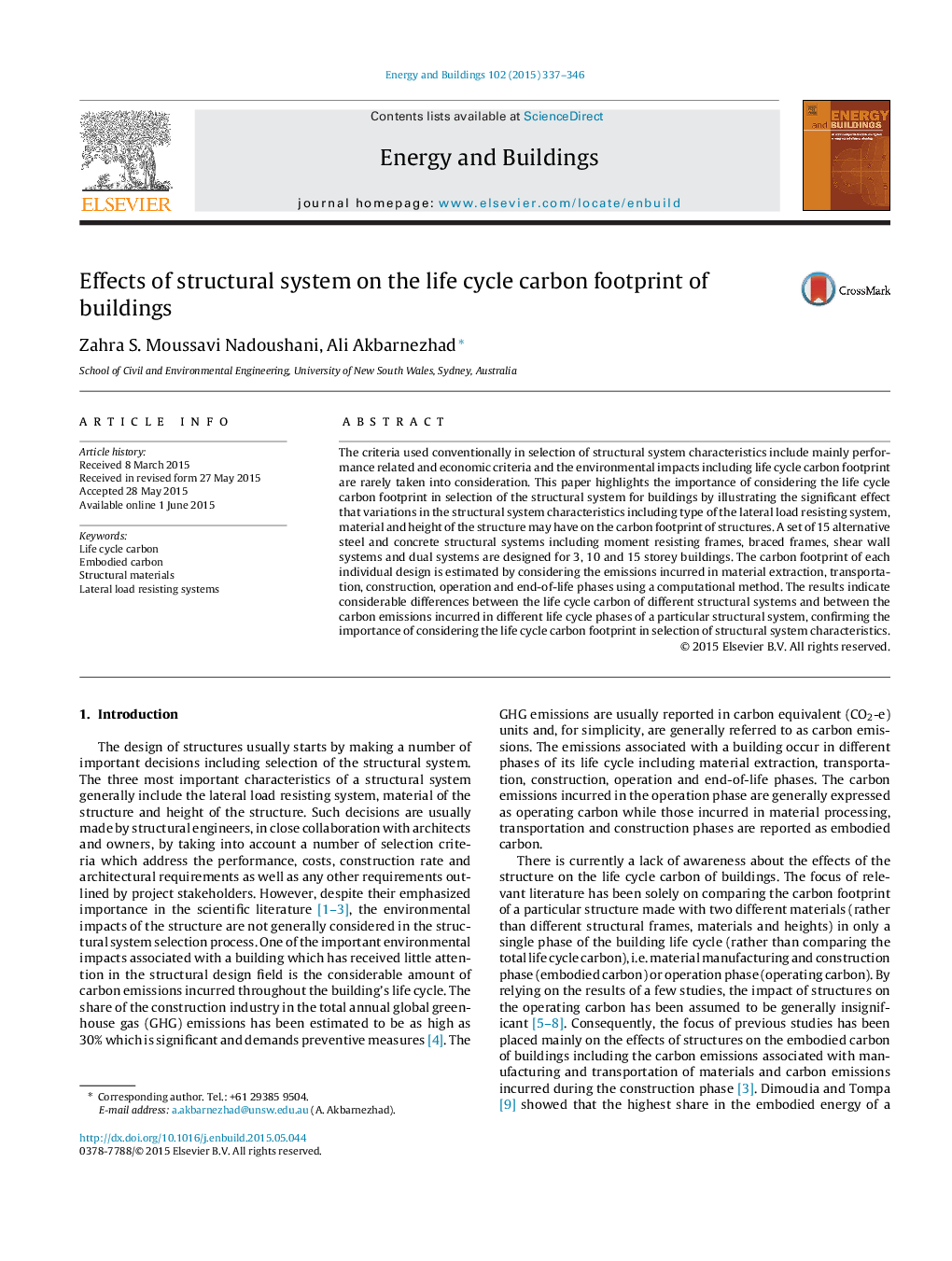| Article ID | Journal | Published Year | Pages | File Type |
|---|---|---|---|---|
| 262547 | Energy and Buildings | 2015 | 10 Pages |
•The life cycle carbon per square meter of a building is affected by its structure.•The effects of characteristics of a structure on its carbon footprint are studied.•A methodology for estimation of the life cycle carbon of structures is presented.•The lateral load resisting system of the structure may affect its carbon footprint.•Material and height of the structure may affect its life cycle carbon footprint.
The criteria used conventionally in selection of structural system characteristics include mainly performance related and economic criteria and the environmental impacts including life cycle carbon footprint are rarely taken into consideration. This paper highlights the importance of considering the life cycle carbon footprint in selection of the structural system for buildings by illustrating the significant effect that variations in the structural system characteristics including type of the lateral load resisting system, material and height of the structure may have on the carbon footprint of structures. A set of 15 alternative steel and concrete structural systems including moment resisting frames, braced frames, shear wall systems and dual systems are designed for 3, 10 and 15 storey buildings. The carbon footprint of each individual design is estimated by considering the emissions incurred in material extraction, transportation, construction, operation and end-of-life phases using a computational method. The results indicate considerable differences between the life cycle carbon of different structural systems and between the carbon emissions incurred in different life cycle phases of a particular structural system, confirming the importance of considering the life cycle carbon footprint in selection of structural system characteristics.
